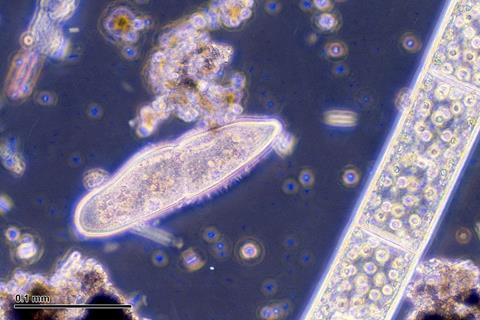Pollution in our waters may be doing more harm than we think. A new study published in Environmental Chemistry and Ecotoxicology reveals that tiny aquatic organisms can pass a dangerous mix of microplastics and heavy metals up the food chain, disrupting organ development and hormone balance in higher-level species. The findings raise critical concerns for both ecosystem health and food safety.

“We used zebrafish as a model to trace how combined pollutants move through aquatic food webs,” shares lead author Yan Zhang. “Over a 90-day experiment, zebrafish exposed to microplastics and cadmium—first absorbed by protozoa—showed delayed growth in the heart, liver and reproductive organs.”
READ MORE: Under the microscope: microplastics
READ MORE: Designer microbe shows promise for reducing mercury absorption from seafood
Notably, hormone levels were off balance, and deeper molecular analysis showed that crucial signaling pathways for growth and reproduction were disturbed.
“What surprised us most was the strength of the combined effect,” says Dr. Zhang. “Microplastics and cadmium are harmful on their own, but together they caused much more severe and lasting damage than expected, highlighting the hidden risks of pollutant mixtures in real-world environments.”
Food webs
While previous studies often looked at individual pollutants or short-term effects, the current findings demonstrate how mixtures of pollutants can accumulate over time and pass through food webs, with long-term consequences. “This work helps connect the dots between environmental contamination and human food safety. What happens in aquatic ecosystems does not stay there—it can ultimately affect us too,” adds Zhang.
The research stands out for its multi-level approach, combining physical observations with hormonal testing and genetic analysis. By integrating these perspectives, the study paints a clearer picture of how pollution interacts within living systems—and why it matters.

No comments yet